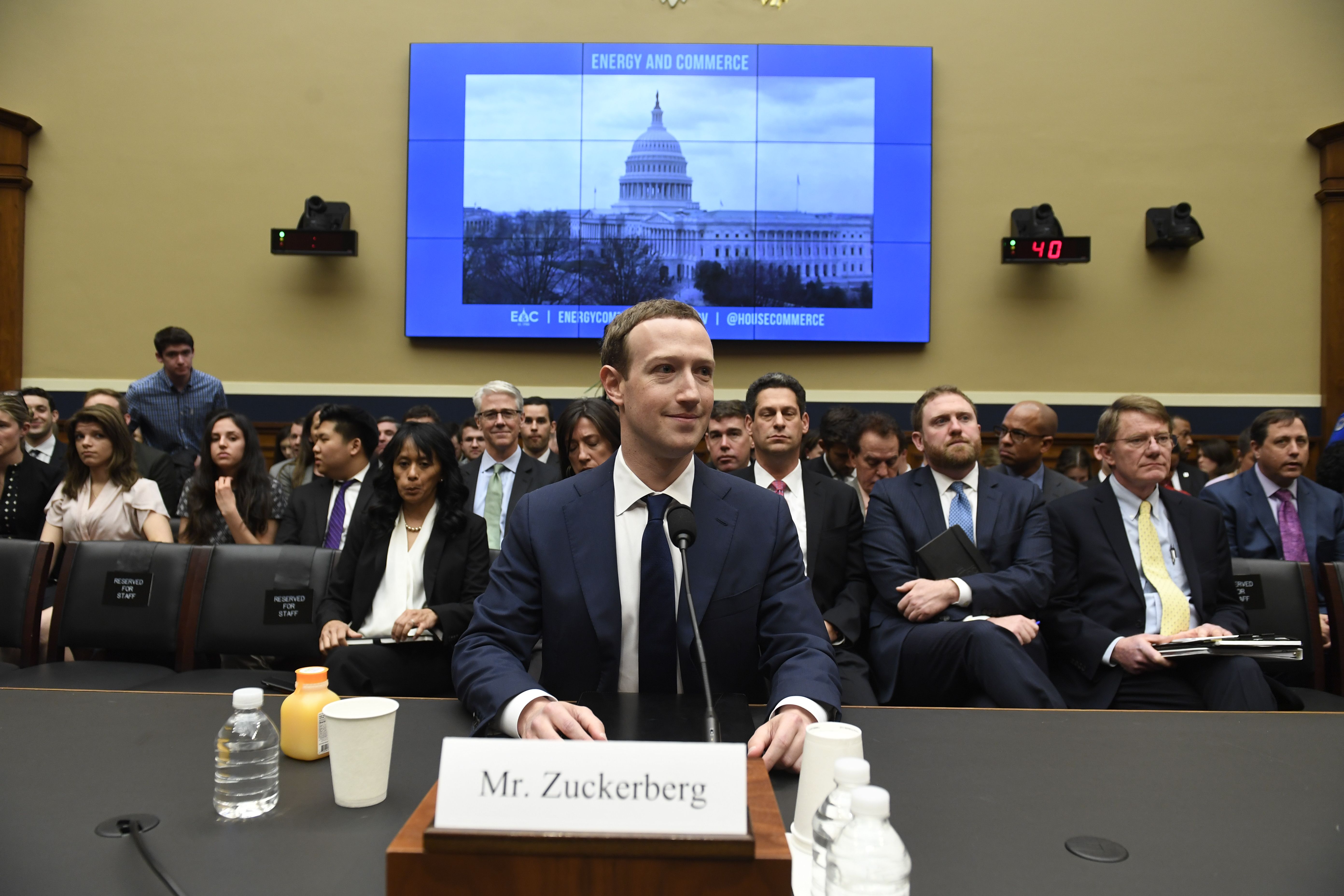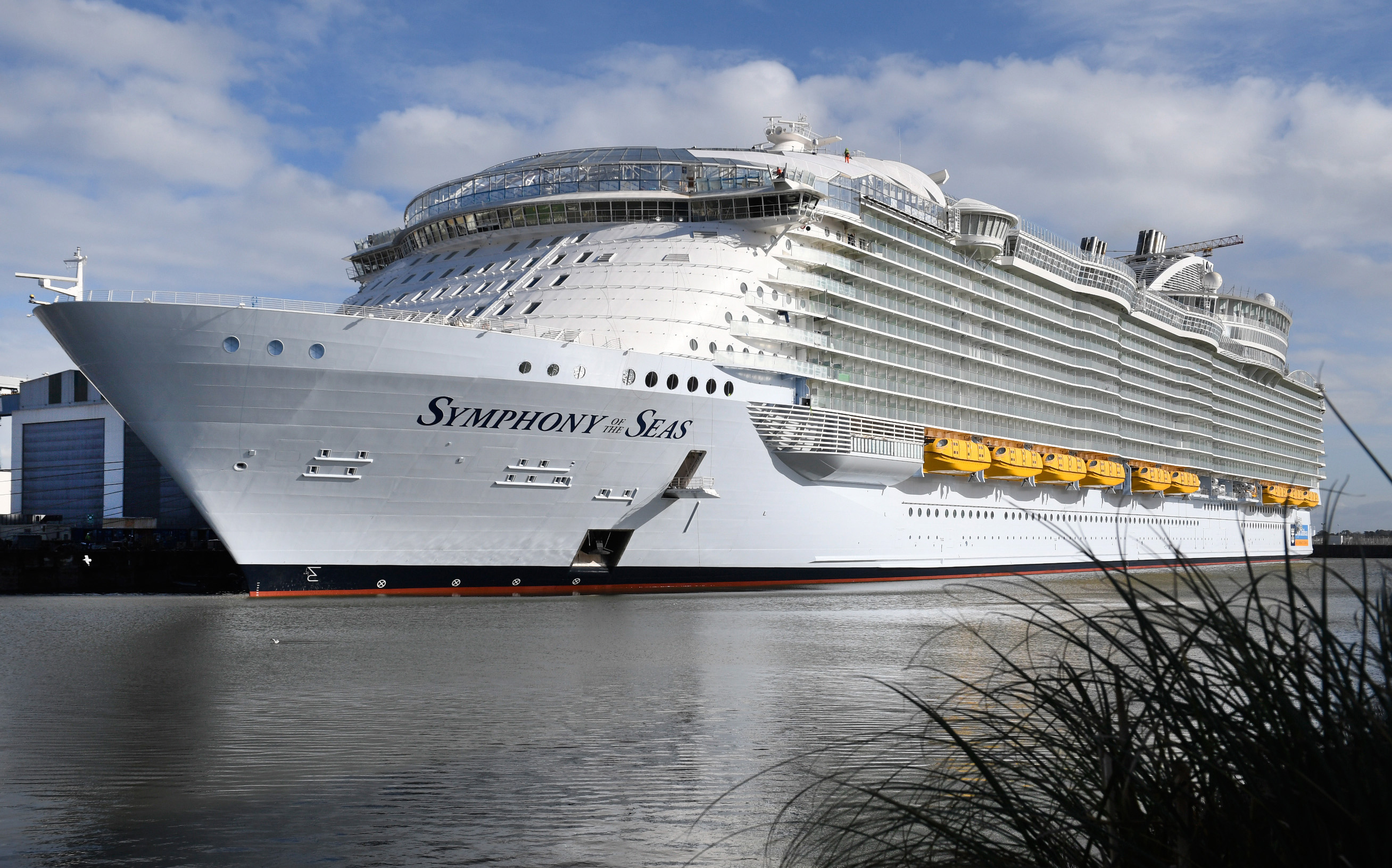A weekly newsletter for Pacific Standard Premium members.
Early Access to Online Features
Coming Next Week: A Native writer struggling against the ignorance of white culture finds that her stories are her lifeline, her wounds are her power, and though the scales have been weighted against her in almost every way, there are many reasons to survive. The essay, “Silence Breaking Woman,” by Terese Marie Mailhot will be available online this coming week exclusively for Premium Members. Plus: Visit psmag.com/premium all week for early access to several other stories from our upcoming May print issue.

(Photo: Saul Loeb/AFP/Getty Images)
Don’t Miss: Facebook & Cambridge Analytica
News and analysis from Pacific Standard on the biggest stories of the week.
This week, Facebook’s Mark Zuckerberg faced members of Congress for two days of testimony in the wake of the Cambridge Analytica scandal as Washington comes to grips with the company’s massive influence on media and information dissemination across the globe—and its access to mountains of private data about users and non-users. We have been covering many of the issues people are discussing in earnest about Facebook for some time. Here’s a round-up of what to read to get caught up:
- After the first day of Zuckerberg’s testimony, editorial intern Ashley Hackett spoke with a cybersecurity expert about whether Congress was letting him off the hook via their lines of questioning.
- Staff writer Francie Diep talked with ethics experts about Facebook’s newly unveiled plan to share user data with social scientists. Their verdict was mostly positive on the concept of the project. How it’s execution will go is yet to be seen.
- Contributing writer Jared Keller wrote about how the Facebook-Cambridge Analytica scandal has little to do with either Facebook or Cambridge Analytica, but is, in fact, a reckoning of the modern self in the age of social media, as well as how the fake news gambit has become a tool for epistemic chaos, one which has been, at least partially, fueled by the proliferation of social media into national discourse.
- We should be more careful with our data, and how much we give to Facebook for short-term gratification, writes associate editor Ben Rowen.
- In the past, Facebook has faced issues with advertisers targeting groups propagating hate speech and has allowed them to exclude users from receiving ads based on their race.
- A major point of the current discussion that we have covered in the past focuses on how long Facebook tracks your online activity, and how it opaquely categorizes the data it compiles on users without their knowledge.
- Staff writer Tom Jacobs has discussed the social effects of the social media giant, including how we can be happier by using it less, how Facebook can symbolize emotional connection, whether or not social media makes us more narcissistic, and even the link its usage has to higher divorce rates.
- Writer Barrett Swanson investigated how the utopian language of an open, fully connected society that permeates much of Silicon Valley, language that Zuckerberg turned to throughout his testimony, is reflected from the work of futurists like Jacque Fresco, who created a model of his perfect society in the swamps of Florida, one that Swanson visited. Facebook had a presence there too.
Getting Sentimental About Science
For the upcoming May issue of Pacific Standard, staff writer Kate Wheeling traveled to Peru to report on a potentially groundbreaking new application of biochar, a soil amendment rich in carbon. Her feature, “The Great, Chaotic Biochar Experiment” will be made available exclusively to Premium members in the coming weeks. Here’s a behind-the-scenes look at her work.
The first time I met Brenton Ladd in person, we were about to embark on a three-day, cross-Andes road trip with two of his colleagues, Lukas Van Zwieten and Ruy Anaya de la Rosa. I’d been talking to Ladd, an Australian plant ecologist based in Lima, for a couple years about his project to make low-emission cookstoves that produce biochar—a tonic of sorts for unhealthy soil. I flew to the edge of the Amazon to see if the substance helped families grow more food, but by the time I arrived he had abandoned the project. (Women, it turns out, just didn’t like cooking with the new stoves.) I found out from Van Zwieten, as I waited in Lima to board my flight to the jungle, that as soon as we landed we’d turn around and drive back—with a few stops along the way.
The first, just minutes from the airport, was an aguardiente depot, its wooden shelves stacked with jugs of the regional moonshine, the occasional snake loosely coiled in the bottom. Aguardiente, or firewater, is a sugarcane alcohol that, as its name suggests, is more sensation than flavor. Ladd bought a bottle and tucked it between our bags in the trunk of his car, where it was jostled open at some point along the uneven road. Whenever the windows were closed to keep out the rain, the car filled with intoxicating air. Perhaps that’s what prompted the men to get sentimental about science at a pit stop high in the Andes, where only the hardiest plants can grow.
Massive open-pit mines pock the mountain range, and Van Zwieten says you can often tell how unhealthy the nearby soil is just from the color. Ladd, looking out over pale yellow and red dirt and sparse vegetation, talks about how he got into science not to change the world, just to better understand it. “But given the state of the world…,” he says, trailing off. Now he’s dedicating his career to finding out if biochar can help remediate polluted or degraded soils from the Andes to the jungle, lifting farmers out of poverty, halting deforestation, and mitigating climate change in the process—more on this in “The Great, Chaotic Biochar Experiment.” “Science is no longer about the quest for knowledge,” Van Zwieten says. “Now it’s about fixing problems. But just limiting science to fixing problems also limits your chances of making big discoveries.”
—Kate Wheeling, Staff Writer

Since We Last Spoke: Back to Gangs
Updates to stories from the Pacific Standard archive.
In January of 2018, the Trump administration announced the end of a program that allowed nearly 200,000 people from El Salvador to live and work legally in the United States. For many Salvadoran immigrants, there’s just as much risk in returning to their home country as there is choosing to stay in the U.S.
Temporary Protected Status was granted to Salvadorans coming to the U.S. after a devastating earthquake in 2001. While El Salvador has recovered from the natural disaster, it has in recent years been plagued by gang violence; as Lauren Markham reported for Pacific Standard last year, about 10 percent of the country’s population belongs to a gang.
In her story, Markham wrote that, as femicide rates soared, so did the number of young girls joining the gangs as a means of survival—though initiation often involves either a beating or a rape.
The 200,000 potential deportees would almost certainly be targeted by Salvadoran gangs, many of which equate living in the U.S. with wealth. Rather than voluntarily face the potential death sentence of deportation, many Salvadorans will likely remain in the U.S., entering the underground economy powered by undocumented immigrants.

(Photo: Fred Tanneau/AFP/Getty Images)
PS Picks
PS Picks is a selection of the best things that the magazine’s staff and contributors are reading, watching, or otherwise paying attention to in the worlds of art, politics, and culture.
Cruising Toward the Future: The last time I gave any serious thought to cruise ships was because I was listening to the collaborative musical efforts of Young Thug and Future on a song by that name. That is until this past week when I came across a Wired UK story by Oliver Franklin-Wallis that tracks the epic creation story of Royal Caribbean’s Symphony of the Seas, which is now the world’s largest passenger ship to ever set sail. The 362-meter vessel includes “more than 40 restaurants and bars; 23 pools, jacuzzis and water slides; two West End-sized theatres; an ice rink; a surf simulator; two climbing walls; a zip line; a fairground carousel…” and so, so much more. Oh, how far we’ve come since the days of schooners, skiffs, and sail.
I’ve partaken in one cruise during my lifetime, almost 15 years ago. Back then, I was a young fresh-faced chap of 11 with an eye for adventure. The trip to Bermuda was carried out with one of the “C” named cruise-line entities, Celebrity or Carnival or something. My only real memories of the journey are: the cramped cabins, cheap attempts at pseudo-luxury, watching Ben Affleck’s infamous romp as Daredevil (Not a recommended pick), and getting a card that let me consume unlimited amounts of soda and indulge in one aspect of the pure excess involved in taking a massive collection of tourists to invade a tiny island.
Basically, all the essential elements of a cruise were included, and, in my view, they were not to be sought again. However, Franklin-Willis’ sharp, well-crafted journey through meta-modern cruise-liner luxury forced me to reconsider my beliefs like an atheist confronted by the face of God. The innovation, thought, and design that has brought this industry from the staid drapery of the late ’90s into a simulacrum of futurist urban planning is undeniably appealing, even to a skeptic. Read this piece and you too will be mesmerized by the engineering magic utilized to create these unquestionably fantastic, and perhaps overwrought, marvels of modern ingenuity.
—Ian Hurley, Engagement Editor
The Women Who Made an Art of Having an Opinion: Perhaps we have recently entered a golden age for female essayists; notable books in the past year alone include Durga Chew-Bose’s Too Much and Not the Mood, Roxane Gay’s Hunger, and Chimamanda Ngozi Adichie’s Dear Ijeawele. In Sharp: The Women Who Made an Art of Having an Opinion, released this April, writer and critic Michelle Dean follows the trailblazing female intellectuals of decades past who led the way for many of today’s women writers. Dean tracks the cultural and intellectual history of 20th-century America through the work of female critics and essayists like Joan Didion, Dorothy Parker, Susan Sontag, and Hannah Arendt. For Dean, these women are united by a quality of “sharpness”—a combination of precise insight and biting wit, which more often than not was viewed as threatening by their male peers.
But even as some women appeared to be breaking ground in new mediums throughout the 20 century, they were often discounted as public intellectuals—a central theme in Dean’s book. A 2013 report that examined the male-to-female ratio in newspapers, radio programs, and television talk shows found a four-to-one imbalance within the public intellectual tradition. Interweaving biography and literary criticism to construct a crucial portrait of women rarely grouped together, Sharp provides one answer as to why such a strong gender imbalance persists and makes a persuasive case that we ignore women intellectuals at our peril.
—Kristina Kutateli, Contributor

Caity on Cardi for GQ: When I die, I want Caity Weaver to write my obituary.
For her last piece at GQ before joining the New York Times Style desk, Weaver profiles Cardi B, a stripper-turned-rap star who has recently taken the mainstream music world by storm. Cardi, known for her body expertly engineered for public eyes, displays her quirky personality and intriguing backstory through her Cardi-specific vernacular.
Weaver has a knack for visualizing her subjects in an odd but satisfyingly perfect manner—her first sentence describes the “slick, brick-colored barbecue sauce clotting under [Cardi’s] Swarovski-crystal manicure,” an unusual depiction of an A-list celebrity. I felt like I was sitting across from Cardi, sharing some ribs in West Hollywood.
In the past, I haven’t been a huge fan of Cardi’s music—what really sold me on Cardi B here was her professed love for Franklin Delano Roosevelt and her blank-faced memorization of presidential fun-facts: “‘[Buchanan] was the 15th president,’ she says, and her tone is as neutral as if she were reciting types of weather. ‘Buchanan is the only president that was a bachelor.'”
Weaver’s profiles for GQ include Wonder Woman lead Gal Godot, Girls Trip star Tiffany Haddish, celebrity drag queen Trixie Mattel, The Big Lebowski‘s Jeff Bridges, and many more. Her interviews with these celebrities are more like anthropological “hangouts” in which she expertly pins down the essence of each person by delightfully describing their surroundings.
Weaver will be one to watch in her move to the Times.
—Ashley Hackett, Editorial Intern
PS in the News
A look at where our stories and staff surface in the national conversation.
- The Marshall Project shared professor Dabney P. Evans’ piece “Why Won’t the Government Let Me Study Gun Violence?,” which examines the Dickey Amendment’s chilling effect on gun research as well as contributor Molly McCluskey’s story about Sacramento’s quest to end solitary confinement for juvenile delinquents.
- The Southern Poverty Law Center posted columnist David M. Perry’s essay “How White American Terrorists Are Radicalized” across its social networks.
- Goodreads tweeted out a Tom Jacobs look at a study that breaks down what turns a book into a New York Times best seller.
The Conversation
‘Call Me By Your Name’ Is a Love Letter to Missed Opportunity (PSmag.com, January 18th)
- I so enjoyed and profited from reading Brandon Tensley’s discerning assessment of Call Me By Your Name. As a gay man I long for movies to get our stories right, and on the terms the movie itself makes clear, Call Me does an outstanding job. So does Mr. Tensley. He captures nuances in the script that make its queer agenda both lucid and organically satisfying, an illumination of, not a “case” for, same-sex tenderness and love. —Ivan Webster
My Brother’s Keeper (February 2018)
- As the article says, it’s cheaper and easier on the families of both the victims and the prisoners to put them in jail for life, so why not do that? Besides, if evidence turns up later to exonerate them, they can be released. If they’re dead, there is no way for the state to make up for having killed them—and think how prosecutor and the victim’s family will feel, knowing that the real killer is still at large while, at their desire, the state has murdered an innocent. [One study showed] that one in 25 inmates [sentenced to death] in the US (4.1 percent) is innocent. —MSGH
If you have any thoughts about this newsletter or our work—what you like/didn’t like/want to see more of—you can reach us at premium@psmag.com. Become a premium member by following the button below. As we continue to build out the benefits of a premium membership to Pacific Standard, we want to hear what would be most valuable to you.




